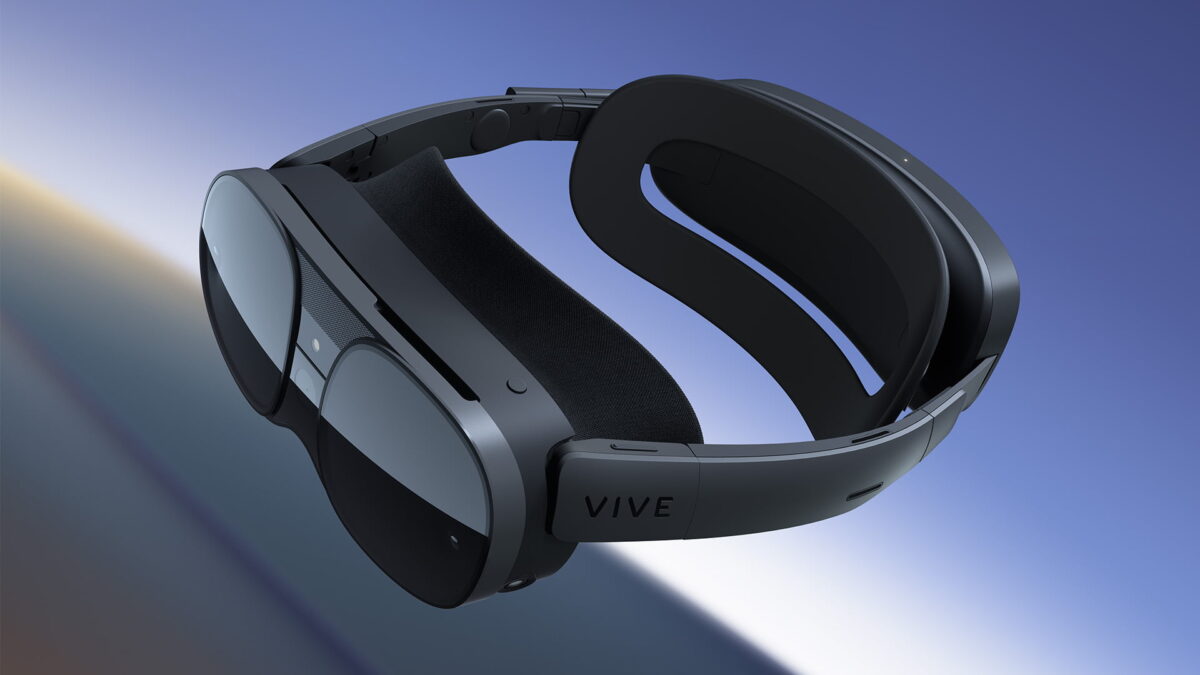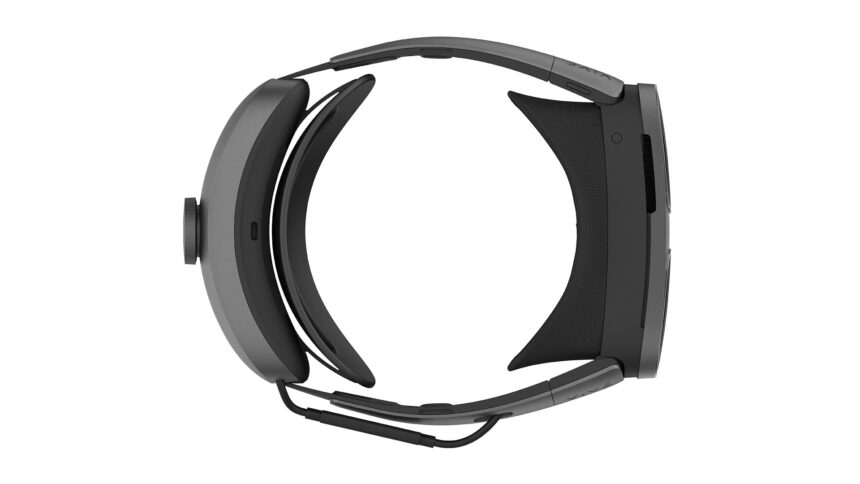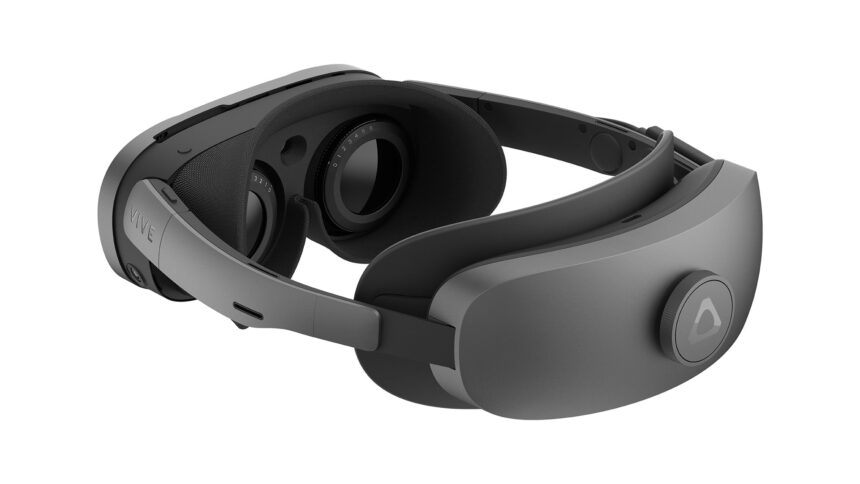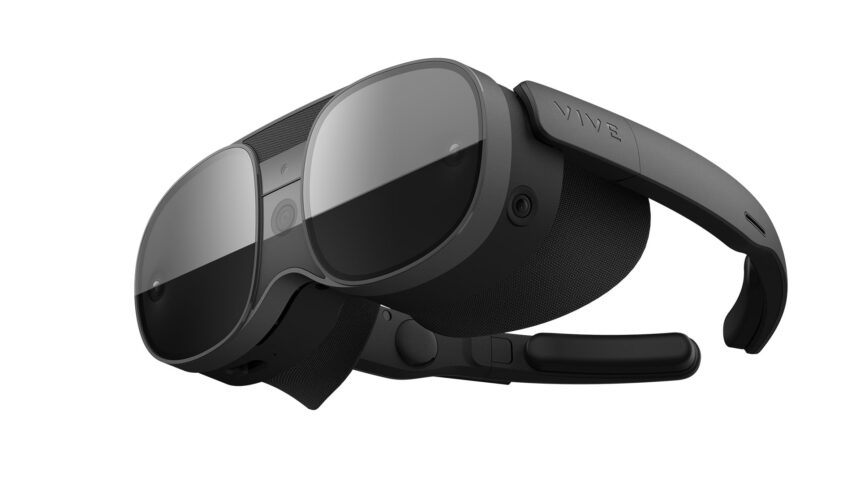Vive XR Elite hands-on: A truly elite headset, but for whom?

What the Vive XR Elite headset is supposed to be, it isn't. I tried the headset and will explain why this is good news.
My story with HTC is one of an old, intimate love affair where the lovers have grown apart over the years. The HTC Vive has a special place in my heart - it introduced me to virtual reality and convinced me that VR has a future.
But then HTC went other ways, more towards business, trying Pro versions that convinced me less and less, or a Cosmos platform that they might as well have shot straight into space. The Vive Flow mainly annoyed me.
Now HTC is relaunching with the Vive XR Elite, looking to get back into the consumer market. I have tried the XR headset and doubt that this will work.
But that's also a very good thing. Let me resolve what might seem like a contradiction.
Disclaimer: Everything that follows is an impression based on about 30 minutes of playtime. This will need to be verified with more thorough testing before rendering a final verdict.
Content
HTC Vive XR Elite: Datasheet
The specifications of the Vive XR Elite have been known for a while. You can read them in the linked article and in the following datasheet.
HTC Vive XR Elite: Lightweight, comfortable, and modular
"Wow, is this headset small! And so light!" These were my thoughts about the form factor as I picked up the Vive XR Elite for the first time. I remember well the weight of the Quest Pro, which my muscle memory tells me felt like a brick by comparison.
When worn, the difference from traditional VR headsets is also noticeable - it even feels lighter than the Pico 4, despite being in the same weight class on paper at around 600 grams. However, the rear part with the battery is heavier on the Vive XR Elite. If I take off the battery and put on Vive's special glasses earpieces, the headset only weighs around 270 grams.

Small, slim, light, modular: Vive XR Elite. | Image: HTC
With the battery and halo strap in place, pressure on the face is increased because the Vive XR Elite doesn't have a headband that goes over the top of my skull. The XR headset has to fit tightly, and I only achieve that through contact pressure. I still have to test how this affects me in the long run. However, this is not a problem during my play time. The Vive XR Elite is very comfortable, at least for shorter and medium periods of use.
I think the aforementioned modularity is great. For example, you can replace the battery via a hot-swap mechanism without switching off the headset. I can also remove the entire rear portion of the headset, attach the earpieces, and connect the "rest" of the XR glasses to an external player, such as a laptop.
However, I didn't find the included glasses earpieces comfortable: they squeeze too tightly to the head, and the contact surfaces are too small on me, making them uncomfortable. Of course, this depends on the head shape, but HTC obviously designed these for much smaller skulls. There are solutions to this issue, for example, via third-party manufacturers or a 3D printer.
The face mask is also easily replaceable. There could be variants in the future that reduce the facial pressure when using the Vive XR Elite in headset mode with the halo band.
No glasses needed for a sharp image & clean tracking
With the Vive XR Elite, HTC adopts what I consider to be the biggest strength of the Vive Flow — there's a diopter wheel on each lens, which I use to adjust my visual acuity. This is convenient because I can wear the XR headset without my glasses.
The pancake lenses deliver a nice, sharp image, the sweet spot appears sufficiently large, and the edge-to-edge clarity is also good. Why only good? Because I do not have the time and apps to take a closer look and make comparisons for an accurate assessment.

The pancake lenses deliver a good image and include a visual focus adjustment dial. | Image: HTC
In the tidy HTC menu (you don't have to bluntly steal from Meta, ByteDance!), I initially have the impression that the display design shows slight reflections or ghosting. If so, however, this effect is far removed from the ghosting of the Pico 4. This has yet to be verified in a detailed test. After a few minutes of use, I no longer see this, and my concerns are dismissed for now.
Colors and brightness seem a bit weaker to me compared to what I remember from my tests of the Quest Pro, but that could also be due to the fact that I play in a relatively comfortably lit room and mostly in mixed reality mode.
The tracking of the Focus 3 controllers is beyond reproach. I cannot detect any dropouts. Another detail that I didn't expect, I found that the hand tracking in an XR app is also good in my brief tests.
Is the Vive XR Elite the best current mixed reality headset?
This brings me to the AR review. A single RGB camera brings the ambient image into the headset, so this is flat, 2D vision. You might expect the Vive XR Elite to have no chance against Quest Pro, right?
Surprisingly, the passthrough is convincing. Unlike the Quest Pro, color isn't superimposed over a black-and-white image. The XR headset's passthrough displays the physical space correctly in terms of color. Distortions are also hardly present and are only noticeable when I get about hand's-width in front of the lens with my hand or other objects. When the headset gets too close, hands and objects become huge.

The AR view is made possible by the single RGB camera in the center of the front. | Image: HTC
Still, I think there is significantly less distortion than even on the Quest Pro. I do not notice a fish-eye effect at all, unlike the Pico 4, which bordered on nausea. Instead, the image is sharp and much clearer than on the Quest Pro. For example, I can read my smartphone and smartwatch (at a certain distance) without any problems. Developers will love that.
However, the problem of the lack of depth accuracy still remains. The depth sensor is not active in my test session. I'm curious if it will make a difference when it is enabled via software updates in the next few weeks. Without a depth-correct display, I constantly miss the mark.
Mixed reality applications work well and I try out different games, such as a bullet-hell spaceship shooter. Or I quickly tap on different surfaces in a skill game. However, I sometimes have to touch the surfaces quite forcefully with the controller's hand to make it count.
The Vive XR Elite performs well with all mixed reality applications that work in free space and without physical anchor points. All others require manual markers, as with the Quest Pro. Neither of these premium headsets can automatically detect objects in physical space. However, I wonder how the lack of depth correctness will affect marked objects like walls or furniture. It's likely that the depth sensor is needed for congruent rendering - but we'll have to wait and see.
Vive XR Elite: Finally, a truly Elite headset from HTC
I'm confident that the Vive XR Elite is the best headset HTC has built in the past four years.
But it's not what it's supposed to be, a VR headset for the consumer market. I asked HTC why they are targeting the B2C market with a whopping $1100 price tag. Answer: We have primarily made B2B headsets in the past few years, and now the time is right for B2C.
It's funny, and fits perfectly with HTC's peculiar marketing, that these XR glasses will not be tempting for consumers. Instead, HTC has created an excellent headset for business applications. Why is that?
It's perfect for B2B because
- it's modular,
- fits in a briefcase,
- has perhaps the best current MR image (though not depth-correct),
- provides a good image,
- is super light, and
- has a much better reputation for data security and business support than Meta and Bytedance.
It is not suitable for B2C because
- it's way too expensive for that,
- HTC can't compete with the Quest App Store,
- the Quest 3, a hard-to-beat competitor, is just around the corner,
- and PlayStation VR 2 will probably be the most important VR gaming platform of the next few years for passionate gamers and disappointed PC VR fans.
HTC seems to have an ace up its sleeve with the Vive XR Elite, which can catapult the company far ahead of the competition in the business market for VR and XR. If they focus on improving the software, cleverly use the depth sensor for depth accuracy, and make the Vive XR Elite available for MDM systems like Microsoft Intune like the Focus 3, then I see much better times ahead for the Vive business unit.
Note: Links to online stores in articles can be so-called affiliate links. If you buy through this link, MIXED receives a commission from the provider. For you the price does not change.